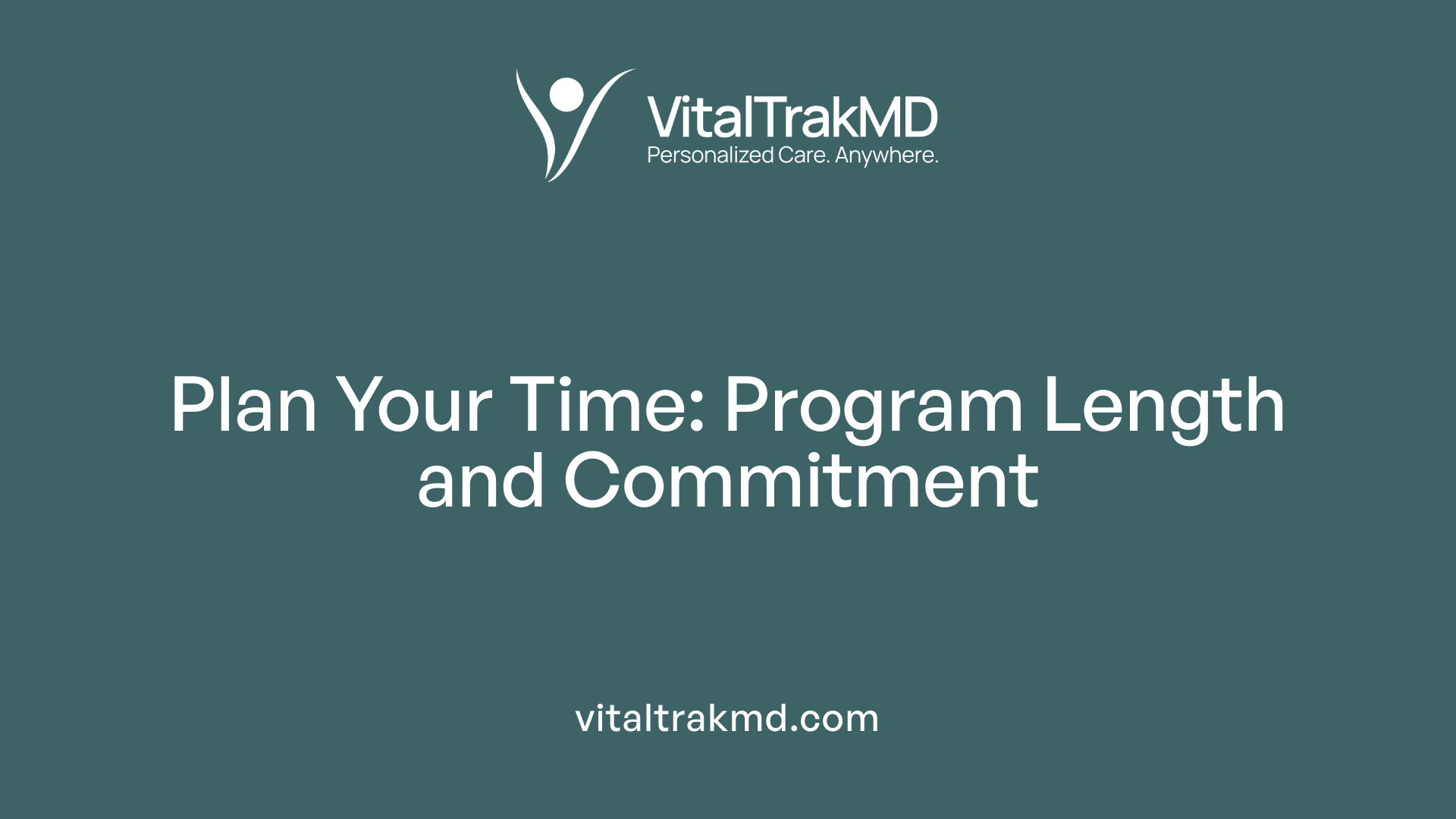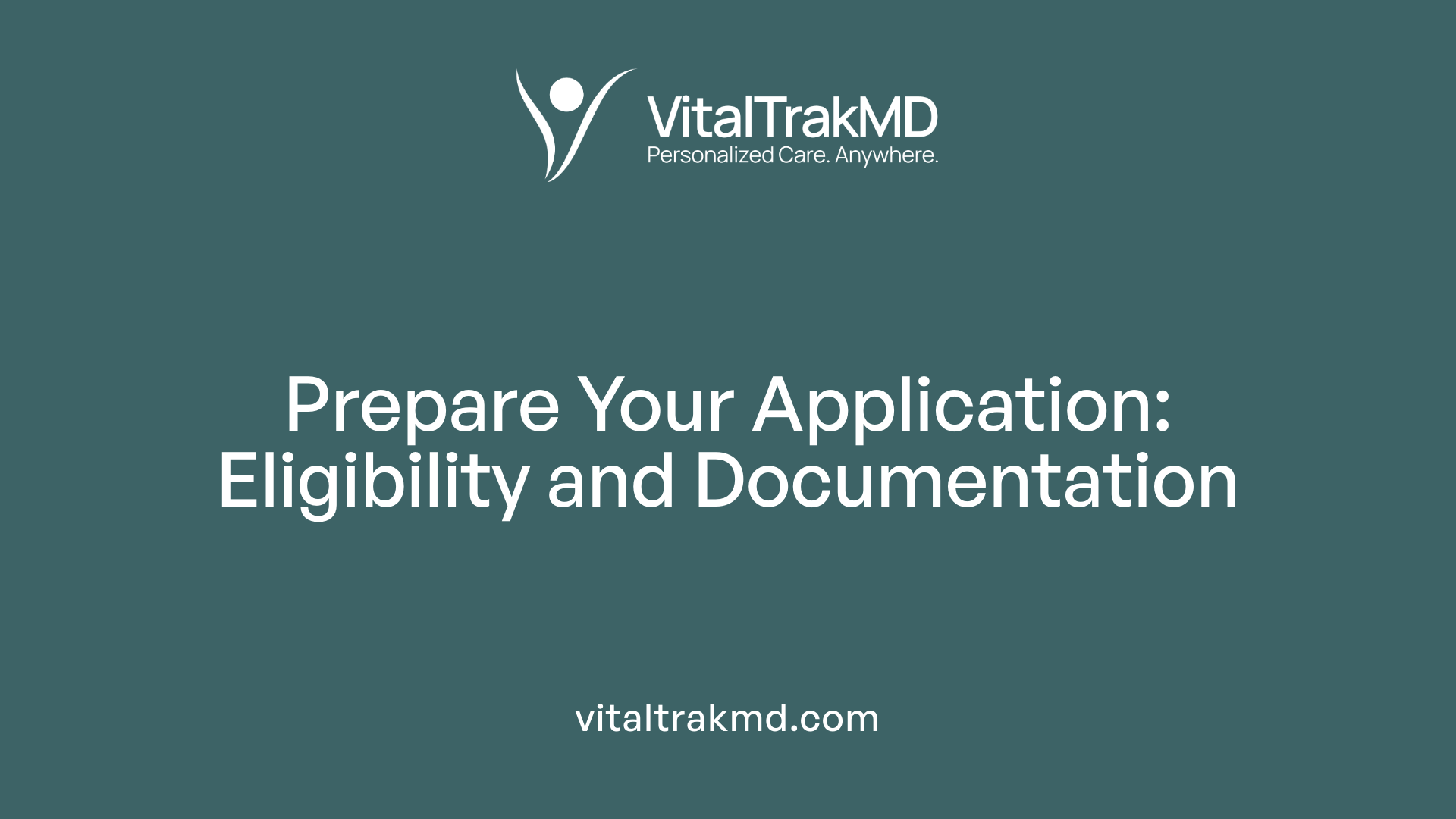Minimum Commitments Required for Joining Hybrid Healthcare Programs

Understanding the Foundations of Hybrid Healthcare Program Participation
Hybrid healthcare programs are revolutionizing medical education by integrating online coursework with practical clinical experiences. To successfully enroll and thrive in these programs, prospective students must meet specific prerequisites, logistical commitments, and financial obligations. This comprehensive overview delves into the core requirements, time commitments, costs, and participant expectations necessary for joining these innovative healthcare initiatives.
Core Prerequisites for Admission into Hybrid Healthcare Programs

What are the core requirements and prerequisites for joining hybrid healthcare programs?
Entering a hybrid healthcare program typically involves meeting several essential criteria to ensure candidates are prepared for the rigorous training. First and foremost, applicants usually need to be at least 18 years old and possess a high school diploma or GED. This foundational educational background ensures students have the basic academic skills required for the coursework.
Proficiency in English is vital, as students must be able to read, write, and speak effectively to understand complex medical concepts and communicate with patients and healthcare team members. Basic computer skills are also necessary because many programs incorporate online learning components and require navigating digital platforms.
Before beginning clinical rotations, students must pass a background check confirming they have no barrier crimes, ensuring a safe environment for patients and staff.
Immunizations are a mandatory part of the prerequisites, designed to protect both students and patients. Required vaccinations include Hepatitis B, MMR (measles, mumps, rubella), Tdap (tetanus, diphtheria, pertussis), Varicella (chickenpox), COVID-19 shots, and TB testing.
Additional requirements can include obtaining Basic Life Support (BLS) CPR certification, which is often essential for clinical practice. For specialized tracks like paramedic programs, candidates may need to meet specific licensing criteria such as current EMT or AEMT certification, prior EMS experience, and successful completion of an entrance test and interview.
Together, these requirements ensure that students are physically, academically, and emotionally prepared for the demands of healthcare training, fostering a safe and effective learning environment.
Time and Duration Commitments for Program Completion

Course Duration and Breakdown
The overall length of hybrid healthcare training programs varies significantly based on the specific subject and program structure. The Medical Assistant program typically takes about 9 months to complete, involving 720 total hours that include classroom instruction, laboratory work, and an externship. In contrast, more comprehensive programs like the Paramedic training extend to approximately 16-18 months, reflecting their broader scope and clinical requirements.
In-Person and Virtual Components
These programs often blend online coursework with in-person activities. For example, the paramedic program’s didactic portion is conducted entirely online, providing considerable flexibility for working students. In contrast, clinical and practical training components require students to engage in hands-on experiences at hospitals, clinics, and community settings.
Study and Training Hours
Students should anticipate a substantial dedication of time to both study and practical training. The Medical Assistant program, for instance, involves around 720 hours of combined coursework, labs, and externship. The paramedic program includes at least 480 hours of field rotations, as well as additional hours for its capstone project.
Clinical and Externship Time
Real-world clinical experience is a core element of these healthcare programs. The Medical Assistant program mandates a minimum of 300 hours of hospital or clinical work, covering areas like emergency rooms, ICU, labor and delivery, and pediatric care. Similarly, paramedic students are expected to complete extensive clinical rotations in various departments, emphasizing the importance of practical, supervised patient care experience.
What is the time commitment involved in enrolling and participating in hybrid healthcare programs?
Participation in hybrid healthcare programs ranges from approximately 9 months for medical assistant programs to 16-18 months for paramedic training, depending on the scope and structure. The programs typically combine online coursework with in-person activities, including orientation, practicums, internships, and community engagement. Students are required to attend scheduled sessions, often during evenings or weekends to accommodate working professionals. Clinical and externship components demand significant time; for instance, at least 300 hours of hospital or clinical experience are necessary, alongside field rotations totaling a minimum of 480 hours, including a capstone of 100 hours.
Financial Obligations and Cost Breakdown

What are the financial obligations or costs associated with program entry?
Entering a Medical Assistant or related healthcare program involves several financial aspects that students need to consider. The initial tuition for a standard program is approximately $7,000, but for more comprehensive or advanced tracks, it can rise to around $14,000. Beyond tuition, students are responsible for additional expenses that support their training and certification.
These expenses include mandatory fees for lab access ($275), purchasing textbooks and course materials (estimated at $225), and costs related to background checks ($35.50). Certification and skill verification require CPR certification ($70) and dressing uniformly for clinical sessions (around $50). Students also need to budget for the AMCA National Exam fees ($125.50), essential for nationally recognized credentials.
What are the payment options and plans?
To make costs more manageable, most programs offer flexible payment options. For instance, a bi-weekly payment plan might involve ten installments of $500 each, with an additional small finance fee of $25. Such arrangements help students spread the financial burden across the duration of the program, typically around 9 months for medical assistant programs and up to 18 months for hybrid paramedic courses.
How can participants manage costs effectively?
Students should plan their finances carefully, considering all direct and indirect expenses. Budgeting for initial supplies, ongoing educational fees, and certification costs is essential. Many programs also offer financial aid options, scholarships, or payment plans, which can substantially reduce financial strain. Keeping track of deadlines for payments and maintaining good financial standing ensures smooth progression through the program and reduces stress.
| Expense Category | Approximate Cost | Notes |
|---|---|---|
| Tuition | $7,000–$14,000 | Varies by program scope |
| Lab Fee | $275 | Required for lab access |
| Books & Materials | $225 | Educational resources |
| Background Check | $35.50 | Mandatory for admission |
| CPR Certification | $70 | Certification needed |
| Uniform | ~$50 | For clinical sessions |
| National Exam Fee | $125.50 | Certification exam |
| Payment Plan | Varies | Bi-weekly payments of $500 + fees |
Understanding the cost structure and having a clear financial plan are crucial steps for prospective students to successfully complete their healthcare training.
Coursework, Study Obligations, and Attendance Expectations

What are the course loads, study obligations, and attendance requirements in hybrid healthcare programs?
Hybrid healthcare education programs are designed to balance online learning and in-person training to prepare students effectively for their careers. Typically, students take on a curriculum of about 10 to 18 credits each semester, depending on the program structure. This includes a mix of virtual coursework and mandatory on-site sessions such as labs, practicums, and externships.
Attendance at scheduled in-person sessions is critical. These sessions focus on hands-on skills in clinical settings like hospitals, emergency rooms, or specialized labs. Punctuality and active participation are essential because they directly influence students' ability to meet licensing requirements and successfully complete the program.
Online components usually require students to manage around 3 to 4 credits per session, which involves self-directed learning, virtual classes, and assignments. This format demands disciplined study habits and time management skills to keep up with coursework outside of scheduled on-site days.
Students must stay consistent in attending their scheduled classes and training sessions. Regular attendance ensures they acquire necessary skills, understand practical applications, and meet the program's graduation criteria. It also fosters engagement with instructors and peers, enriching the learning experience.
Overall, success in hybrid healthcare programs depends heavily on balancing online studies with in-person commitments, maintaining discipline, and actively engaging in all aspects of training.
Application and Eligibility Standards for Entry into Hybrid Programs

What are the application standards, documentation, and eligibility criteria for hybrid healthcare programs?
To gain admission into hybrid healthcare programs, applicants must meet several specific standards and provide essential documentation. One crucial requirement is the submission of a comprehensive application package, including an Agency Demographics Form and attestations from current administrators or supervisors. These documents verify the applicant’s professional background and compliance with program standards.
Eligibility for these programs typically necessitates holding relevant healthcare certifications or licenses, such as Nevada EMT or Advanced Emergency Medical Technician (AEMT) credentials. Candidates must also pass thorough background checks and meet immunization protocols, which often include vaccinations against Hepatitis B, MMR, Tdap, Varicella, COVID-19, and testing for tuberculosis (TB). These health requirements ensure safety and compliance with regulatory standards.
Educational prerequisites are also important. Many programs look for applicants with a minimum GPA of 2.75 and successful completion of courses in anatomy, physiology, and microbiology. Moreover, individuals should possess current Basic Life Support (BLS) CPR certification and, in some cases, pass specific entrance examinations such as the ATI TEAS. Prior practical experience, including clinical or EMS work, reinforces eligibility.
The selection process involves multiple steps, including virtual testing, interviews, and review of credentials to ensure applicants meet both academic and practical standards. Compliance with state regulations and program accreditation, like those from CAAHEP, further underpin the eligibility criteria.
Overall, entry into hybrid healthcare programs demands a combination of documentation, educational background, professional certifications, and adherence to health and safety regulations. This thorough process helps ensure that students are well-prepared to succeed and provide quality care in their future roles.
Clinical, Externship, and Hands-On Training Requirements
Are there clinical, externship, or practical training commitments involved?
Yes, most healthcare programs, including those for medical assistants and paramedics, include essential hands-on training components. These typically involve around 100 hours of externship over approximately two months. During this period, students shadow and work alongside healthcare professionals in real settings such as hospitals and clinics. These experiences are designed to give students practical skills and a clearer understanding of clinical operations.
Moreover, field rotations are a significant part of the curriculum, requiring a minimum of 480 hours. These include specialized areas such as ICU, ER, respiratory therapy, labor and delivery, pediatric care, and surgical units. A noteworthy component is the 100-hour capstone project, which synthesizes learning and provides intensive clinical exposure.
While externships are often unpaid, their value in professional development is immense. They help students improve their skills, increase employability, and build professional networks. Participation in these practical training experiences is crucial for preparing students for the demanding environments they will encounter in their healthcare careers.
Program Structure, Curriculum, and Progression Pathways
What is the typical program structure, including curriculum or coursework commitments?
Hybrid healthcare education programs are organized to combine classroom instruction, practical labs, and hands-on clinical experiences, providing a comprehensive learning environment. The 720-hour Clinical Medical Assistant Program exemplifies this structure, spanning roughly nine months. Students undertake classroom lessons, participate in laboratory exercises, and complete externships in real healthcare settings.
The curriculum balances theoretical understanding with practical skills, covering essential medical procedures, patient care, and administrative tasks. Course modules are scheduled with weekly deadlines and assessments to ensure steady progress. Clinical hours are integral, combining techniques learned in class with real-world application.
Flexibility is a hallmark of hybrid programs, featuring online coursework that allows students to study at their own pace while meeting specific deadlines. Tracking tools and milestones help both students and instructors monitor progress, confirming all educational and practical experiences are completed successfully for graduation.
This structured approach ensures students gain the necessary competence, supporting career advancement in the healthcare field while accommodating the schedules of working professionals.
Participant Expectations and Enrollment Conditions
What are the enrollment conditions and participant expectations for hybrid healthcare programs?
Participants interested in hybrid healthcare training programs must fulfill specific enrollment criteria. These include completing initial health assessments and screenings to ensure they are physically prepared for clinical work. Most programs require proof of vaccinations such as Hep B, MMR, Tdap, Varicella, Covid-19 shots, and TB testing, aligning with safety and health regulations.
Access to suitable technology is essential, as the didactic portion is often conducted online. Participants need reliable computers or smartphones with internet connectivity to attend virtual classes and simulations.
Active participation is a fundamental expectation. Students are expected to engage fully in scheduled classes, practical labs, and clinical rotations. Regular attendance, punctuality, and proactive communication with instructors and clinical supervisors are vital for success.
Adherence to safety protocols, hygiene practices, and conduct standards is mandatory throughout the program. Compliance with these standards ensures not only personal safety but also the safety of peers, instructors, and patients.
Participants should routinely update themselves on program requirements and remain compliant with all regulations. Staying informed about immunizations, background checks, and certification renewals is critical.
In essence, engaging actively and responsibly in the program lays the foundation for a successful healthcare career, particularly within the flexible structure that hybrid programs offer.
Starting Your Journey in Hybrid Healthcare Education
Embarking on a hybrid healthcare program involves fulfilling a set of foundational requirements, committing substantial time and effort, and managing associated costs. By understanding these minimum commitments—from prerequisites and coursework to clinical exposure and participant responsibilities—prospective students can prepare effectively for a successful educational experience, ultimately paving their way into a rewarding healthcare career with flexible learning pathways.
References
- Hybrid Clinical Medical Assisting Program | Virginia
- Paramedic Program: Hybrid - Emergency Medical Services
- Hybrid Care: Your Pathway to Value-Based Care Success - Medbridge
- Hybrid Care Is a Game Changer for MSK Treatment - Medbridge
- Preparing for Hybrid Care: Laying the Groundwork for Digital ...
- The Complete Guide to Hybrid MPH Programs
- A Day in the Life of a Hybrid OT and PT Student | Health Professions
Recent articles
Want to Feel Better and Live Healthier?
Join hundreds of patients taking control of their health with personalized care that fits their life – not the other way around.
Rated 4.8/5 by 32+ customers







